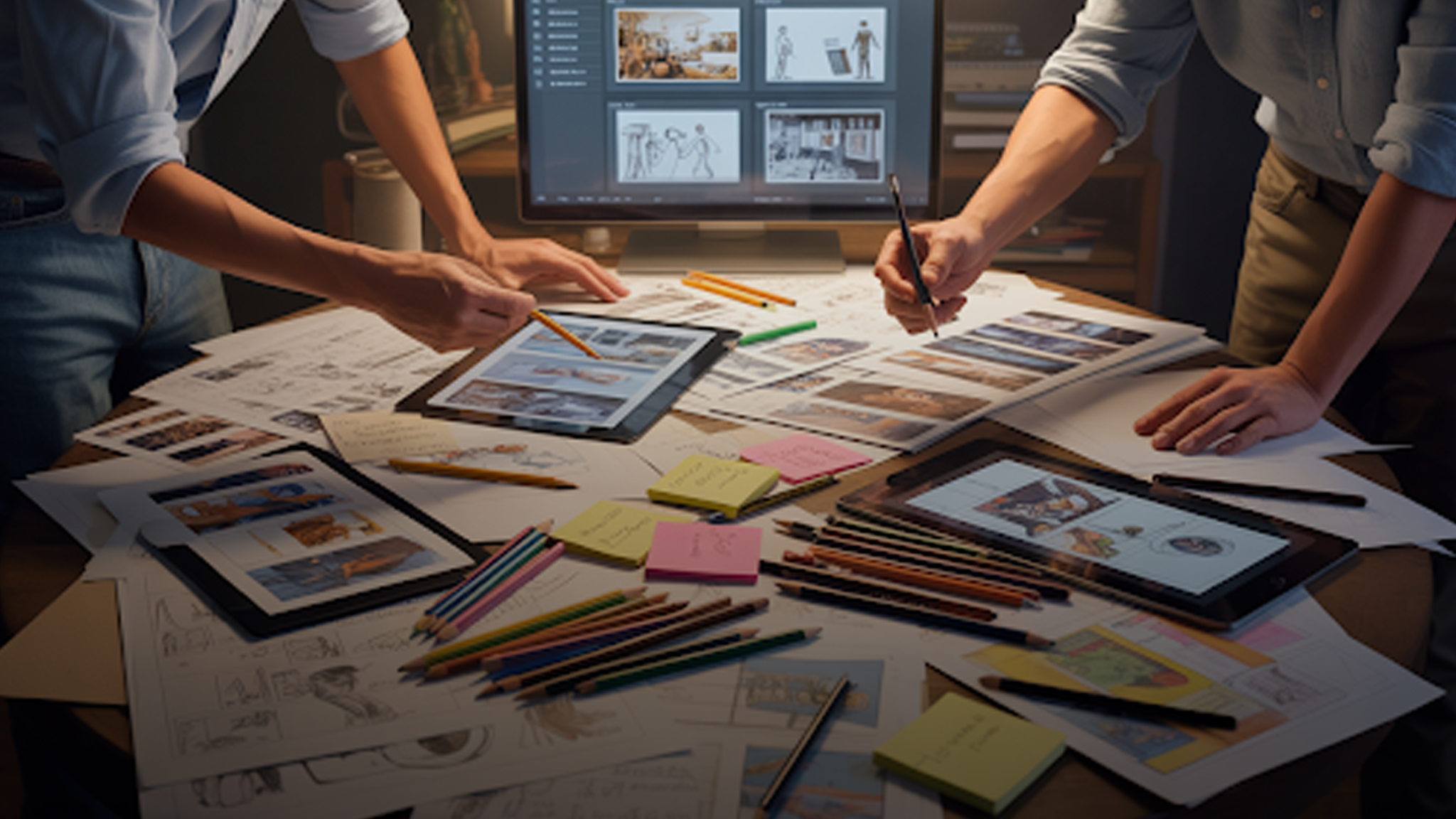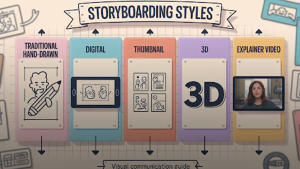Ever watched a video and thought, “Wow! That was smooth”? That kind of flow doesn’t just happen. Behind most great animations and explainer videos, something simple sets the stage from the beginning. It’s called a storyboard.
Storyboards are like picture maps. They show how scenes will play out before production begins. Whether you’re a filmmaker, animator, or small business owner, the right storyboard format makes everything easier to follow.
Some people miss this step or choose one that doesn’t fit. That’s where AnimatedVideos.co comes in. Their team creates storyboards in different styles, built around your idea and goals. In this guide, we’ll walk you through the formats so you can find what works best.
What Is a Storyboard and Why Does It Matter?
A storyboard is like a visual game plan. It shows how your story will move forward, frame by frame. Each panel includes drawings, notes, or labels that map out the action, camera angles, and key moments before anything is filmed or animated.
Whether it’s animation, film, marketing, or even education, storyboarding helps bring scattered ideas into one clear vision. It gets everyone on the same page and keeps things running smoothly. Without it, projects often lose focus. With it, teams work faster, smarter, and with fewer surprises.
What Are the Different Formats and Styles of Storyboards?
Storyboards are a vital part of bringing any visual narrative to life. They help filmmakers, animators, and creatives plan their visual flow before production begins. From rough sketches to polished 3D layouts, each type of storyboard brings something different to the table. Below are the most common formats used across industries:
Different Types of Storyboards
- Traditional Storyboards: These are raw, hand-drawn frames used to capture the early rhythm of a story. Quick, simple, and full of creative freedom, traditional boards help directors block scenes and map movement without needing high-detail artwork.
- Digital Storyboards: These are built on computers using tools like Photoshop, Boords, or Storyboarder. They’re clean, editable, and easy to revise. Perfect when you need a pro finish or want to share visuals with a remote team.
- Animated Storyboards: They are also called animatics, these boards add timing and motion to scenes. Instead of flipping between stills, you see how the story flows. Great for testing pacing or complex effects before jumping into full animation.
- Thumbnail Storyboards: These are small, quick sketches that let creatives experiment freely. Ideal in early brainstorming. They’re like sticky notes for visual ideas—fast, loose, and effective.
- Written Storyboards: Sometimes you don’t need drawings—just strong words. These rely on descriptions to walk through scenes. Handy when visuals come later or when paired with a detailed shot list.
- Sketched Storyboards: Rougher than traditional boards, these use stick figures and quick lines to show the basics. Great for fast idea testing and open collaboration.
- Explainer Video Storyboards: Tailored for short, punchy animated videos. They blend visuals and text to make messaging crystal clear. Often used by animation studios and marketing teams.
- Framed Storyboards: Each panel is shown in a cinematic frame, mimicking what a camera might capture. This helps with shot composition and direction.
- Shot Descriptions: These add context beneath each panel. They explain what’s happening, how it should feel, or where the camera moves. Super useful for technical clarity.
- 2D vs. 3D Storyboards: 2D boards stick to flat illustrations. Perfect for simple animations and explainer videos. 3D boards go deeper—literally. They help plan out complex shots with camera angles and movement in a three-dimensional space.
What Are Some Real-World Examples of Storyboards?
- The Iron Giant: This classic animation relied on hand-drawn boards that weren’t overly detailed, but packed with storytelling power. Simple sketches showed camera movement, pacing, and emotion with impressive clarity, proving that strong ideas don’t need polished lines.
- Wall-E: Pixar storyboarded Wall-E using basic stick figures and clean layouts that nailed the feel of each moment. These early frames helped lock in character emotions and camera setups—guiding the film’s visual tone right from the start.
- Mad Max: Fury Road: Before roaring across the screen, Mad Max was meticulously mapped in grayscale digital boards. Each chase, impact, and angle was laid out ahead of time, helping the crew orchestrate chaos with precision.
- Moana: For Moana, animated storyboards were crafted in Toon Boom to explore water movement and action shots. These motion-driven frames let Disney’s team experiment with flow and energy early in the process.
These animation storyboard samples show that great storyboards aren’t about fancy details—they’re about shaping the story clearly, so every frame in production has a purpose.
Which Storyboard Style Fits Best for Your Project?
Every project has its own vibe. That’s why there are different storyboard styles. A fast-paced ad might need a photo storyboard to show exact camera angles. A fun explainer? That’s where digital or 2d animation storyboard examples shine. For product demos in motion, 3D boards do the heavy lifting.
Choosing the right style depends on your goal, your audience, and how polished the final product needs to be. That’s also where a pro service like AnimatedVideos.co can guide you, they don’t just storyboard, they match style to story.
How to Build a Storyboard Step-by-Step
Building a storyboard doesn’t have to be complicated. Here’s a simple step-by-step guide to map out your ideas clearly before production begins:
- Know Your Story: Break your script into key scenes and moments
- Create a Shot List: Describe what each shot needs to show and how it should be framed
- Sketch Thumbnails: Draw quick panels to shape the visual direction
- Add Dialogue and Descriptions: Write notes or key lines below each scene
- Specify Camera Movements: Show camera motion with simple arrows or cues
- Refine Your Sketches: Make clean versions with clearer visuals and scene flow
- Get Feedback and Revise: Share with your team and adjust where needed
- Choose Final Format: Use paper, software, or animatics based on what fits your workflow
How to Build a Storyboard Step-by-Step
Building a storyboard doesn’t have to be complicated. Here’s a simple step-by-step guide to map out your ideas clearly before production begins:
- Know Your Story: Break your script into key scenes and moments
- Create a Shot List: Describe what each shot needs to show and how it should be framed
- Sketch Thumbnails: Draw quick panels to shape the visual direction
- Add Dialogue and Descriptions: Write notes or key lines below each scene
- Specify Camera Movements: Show camera motion with simple arrows or cues
- Refine Your Sketches: Make clean versions with clearer visuals and scene flow
- Get Feedback and Revise: Share with your team and adjust where needed
- Choose Final Format: Use paper, software, or animatics based on what fits your workflow
When choosing a storyboard style, here’s what to keep in mind:
- Project type: Animation vs. live action vs. product video
- Timeline: Need it fast or can you refine over time?
- Team setup: Are designers and animators working together?
- Budget: More detailed storyboards take more time (and cost)
It’s not about picking the “best” type. It’s about picking the right one for the job.
Why Storyboards Are Non-Negotiable
According to a 2024 report by Wyzowl, companies that use video marketing see a 66% higher lead conversion rate. But poorly planned videos can drain time and budget fast. Storyboarding avoids that.
It saves hours of guesswork. It makes communication with your team and clients smoother. And most importantly, it sets the tone for everything that follows.
That’s why AnimatedVideos.co includes storyboarding in all their animation services. They don’t just draw pretty pictures—they help you plan smarter.
Frequently Asked Questions About Storyboards
What is a 3-frame storyboard?
A 3-frame storyboard uses three panels to quickly visualize a scene or sequence. Each frame typically captures one key shot or moment, and there’s space below for notes about sound, timing, or camera movement. It’s great for short ads, scenes, or testing quick ideas.
How many types of storylines are there?
There are seven classic story arcs that most narratives follow: overcoming the monster, rags to riches, the quest, voyage and return, rebirth, tragedy, and comedy. Understanding your core storyline helps shape better storyboards.
What is a 6-box storyboard?
A 6-box storyboard has six panels laid out to map a full story or longer scene. It’s a simple and flexible format used for everything from classroom story planning to film scenes. Each box captures a key moment, giving you a clear sense of structure.
What is a 3D storyboard?
3D storyboards are built using 3D modeling tools to create scenes with depth and camera movement. They're often used in animation and complex ads where angles, transitions, and motion need careful planning. These boards bring your vision closer to the final look.
What kinds of projects can be planned using storyboards?
Storyboards work for a wide range of projects—from explainer videos and animated films to commercials, educational content, and even app tutorials. If your work involves visual storytelling, a storyboard will help organize it.
What is a storyboard format?
A storyboard format is the layout or structure of the storyboard itself. Most include boxes or frames for images, plus space for dialogue, actions, and scene notes. Whether drawn by hand or built in software, the format should match the project type and team’s needs.
What is a visual storyboard?
A visual storyboard is a sequence of drawings or images that lay out how a story will unfold. Each panel shows actions, expressions, and even camera angles. It’s like a comic strip for your project—turning concepts into something others can follow.
What’s the difference between a thumbnail and a storyboard?
Thumbnails are quick, tiny sketches used in the early stages of storyboarding. They’re rough drafts to explore flow and timing. A full storyboard is more refined and ready to guide production. Think of thumbnails as brainstorming and storyboards as the actual plan.
Conclusion: Start With a Sketch, End With a Win
Whether you’re launching a product, explaining a service, or telling a brand story, the right storyboard sets you up for success.
From rough hand-drawn drafts to polished storyboard 3d animation previews, each style has its own strength. It all comes down to your project’s needs and how clear you want things from the start.
If you’re not sure where to begin, let AnimatedVideos.co walk you through it. They’ve helped hundreds of businesses turn rough ideas into eye-catching animations—and it all starts with the right storyboard.




